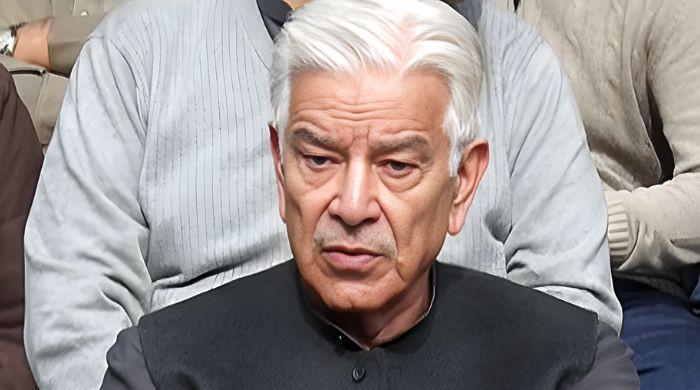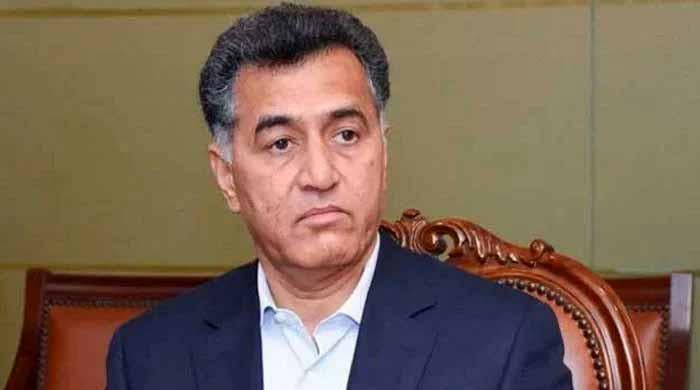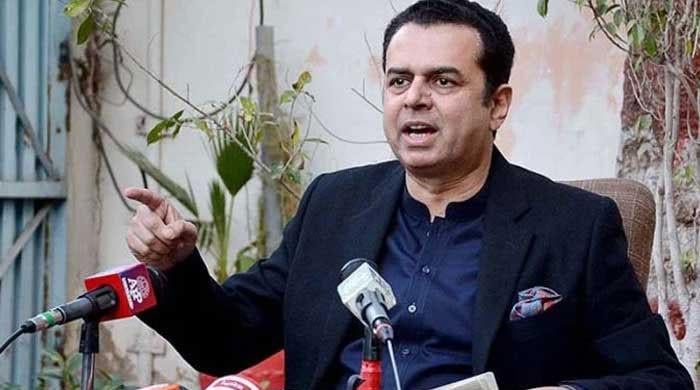Pakistan’s catastrophic flooding death toll nears 1,300 as relief operation continues
Death toll since June 14 has reached 1,290 with 29 people dying in the last 24 hours, NDMA report shows
September 03, 2022
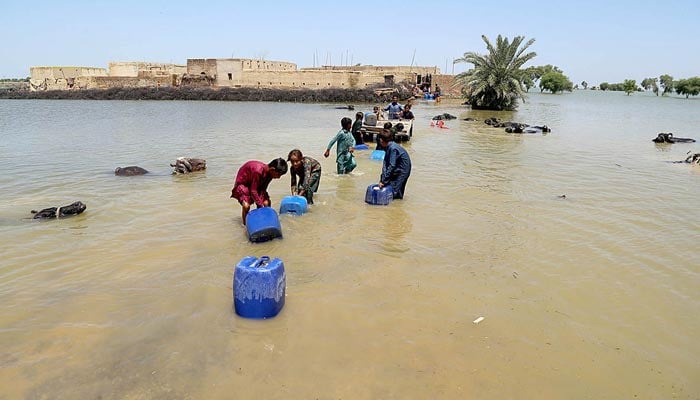
- Death toll since June has reached 1,290 with 29 people dying in the last 24 hours, NDMA report shows.
- Poverty alleviation minister says so far 723,919 families have received the 25,000 cash relief.
- Due to internal displacement, more than 500,000 people are currently living in relief camps.
The death toll from ravaging monsoon floods in Pakistan neared 1,300 as government agencies and private NGOs continue with their relief operations described as a “humanitarian disaster of epic proportions”.
The death toll since June 14 has reached 1,290 with 29 people dying in the last 24 hours, the National Disaster Management Authority (NDMA) said on Saturday.
Large parts of the country remain submerged – particularly the provinces of Balochistan, Khyber Pakhtunkhwa and Sindh in the south. At least 180 people have died in Sindh followed by Khyber Pakhtunkhwa (138) and Balochistan (125).
At least, 1,468,019 houses have been partially or totally damaged, while 736,459 livestock has been killed due to the floods.
Aid has flowed in from a number of countries, with the first humanitarian assistance flight from France landing on Saturday morning in Islamabad. But Pakistan’s largest charity group has said there were still millions who had not been reached by aid and relief efforts.
Initial estimates of the damage have been put at $10 billion, but surveys are still being conducted along with international organisations.
Federal Minister of Poverty alleviation and Social Safety Shazia Mari said so far 723,919 families have received the 25,000 cash relief (per family) and an amount of Rs18.25 billion has been disbursed.
“Despite challenges, Benazir Income Support Programme rolled out its operations within no time after the announcement by Prime Minister [Shehbaz Sharif],” she wrote on Twitter.
Earlier today, in a press conference at the National Flood Response and Coordination Centre alongside military officials, Minister for Planning Ahsan Iqbal called on the international community to support Pakistan and assured the nation that the government — supported by its functionaries — would leave "no stone unturned" to bring normalcy back at the earliest possible time.
Due to internal displacement, more than 500,000 people are currently living in relief camps across Balochistan, Khyber Pakhtunkhwa, Sindh, and Punjab.
The floods that have inundated a third of the country — affecting more than 33 million people — were preceded by four heatwaves and multiple raging forest fires, the disaster management chief told the high-level meeting, highlighting the effects of climate change in the South Asian nation.
High flood enters Badin
A high flood of 560,000 cusecs will pass through Kotri Barrage today and has already entered Badin, the Sukkur Barrage control room in-charge said, with the undeterred water causing widespread devastation and fatalities in different areas of the country.
Kotri Barrage lies on the Indus River between Jamshoro and Hyderabad in Sindh, where the situation has been bleak ever since the flooding started last month.
Sukkur Barrage was in high flood as the reservoir received flows of 600,000 cusecs of water from Taunsa Barrage, said the official.
He maintained that 29,000 cusecs of water had been added to the reservoir during the past 24 hours.
In view of the expected flood, all the canals originating from the barrage have been closed for an unspecified period, he added.
Water level in Manchar lake at alarming levels
The water level in Manchar lake has increased “dangerously” and the authorities concerned have directed the administration to evacuate people living in nearby communities in view of the danger of embankments breaking.
According to deputy commissioner Jamshoro, the water level of Manchar Lake is continuously rising, therefore the risk of the dam breaking has increased, warning it could break at any time.
He further added that the authorities will try till the last moment to control the situation; warning that the next 24-48 hours are critical.
Army's rescue efforts
Briefing the media on rescue and relief efforts by the armed forces, Director-General Inter-Services Public Relations (ISPR) Babar Iftikhar paid rich tribute to Balochistan Corps Commander Lt Gen Sarfraz Ali and others who were martyred in a helicopter crash while serving the nation amid floods.
Corps commander conferences held in July and August reaffirmed commitment to provide all possible help to flood affectees and Chief of Army Staff General Qamar Javed Bajwa gave special directions in this regard, he added.
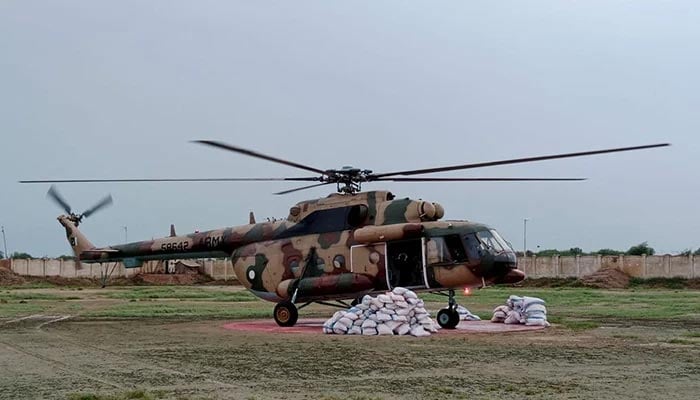
“The army chief visited flood-affected areas and monitored the rescue operations,” the spokesperson said, adding that the army officials rescued people despite bad weather and other challenges.
“Army set up 147 relief camps across the country [to facilitate the flood victims],” Babar Iftikhar added. He maintained that 50,000 people were given relief in the camps.
Pakistan Air Force rescued over 1,521 people trapped in the floods, the military’s spokesperson said.
‘2022 brought some harsh realities'
“The year 2022 brought some harsh realities of climate change for Pakistan,” the chief of the National Disaster Management Authority Lieutenant-General Akhtar Nawaz told a briefing for the country’s top leadership.
“This year we did not witness a spring season — we faced four heatwaves which caused large-scale forest fires across the country,” he said.
The fires were particularly severe in the southwestern province of Balochistan, destroying swaths of pine-nut forests and other vegetation, not far from areas now underwater.
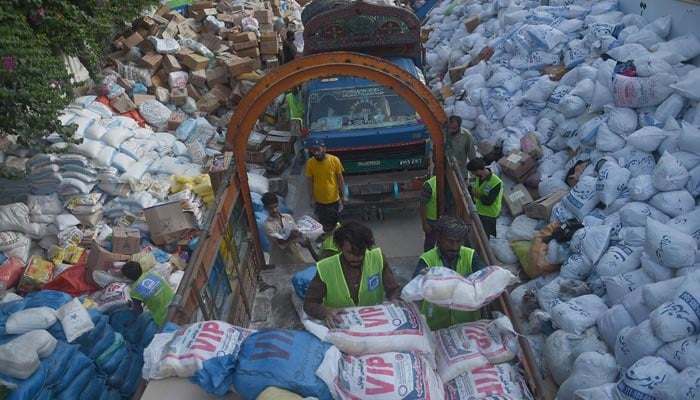
Balochistan has received 436% more rain than the 30-year average this monsoon.
The province has seen widespread devastation, including a washing away of key rail and road networks as well as breakdowns in telecommunications and power infrastructure, the meeting was told.
The country has received nearly 190% more rain than the 30-year average in the quarter through August, totalling 390.7 millimetres (15.38 inches). Sindh province, with a population of 50 million, was hardest hit, getting 464% more rain than the 30-year average.
With additional input from Reuters





